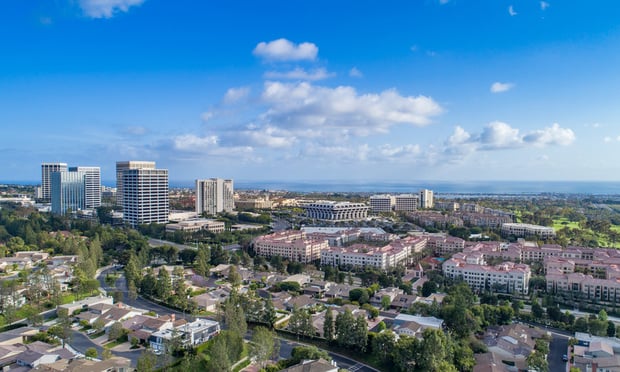LOS ANGELES-Green, for lack of a better word, is good. But it doesn't come without a price, or risk, according to Timothy Corbett, president of Pasadena-based SmartRisk. Speaking yesterday at AIA-Los Angeles' inaugural conference on public space and design, he said the green building boom has created increased challenges to designers and engineers of those projects.
Corbett explained that clients of green projects have heightened expectations of the finished product. But sometimes what they envisioned doesn't measure up to what they see, leading to claims filed against the project's engineer or architect.
Corbett said the claims carry a broad range of complaints. In one case, the client cited a US Green Building Council (USGBC) study that promised healthier and more productive employees in a gold-certified building. “The tenant demanded a rent rebate and the owner sued the design firm for negligence for believing it would be a non-sick building,” said Corbett.
In another case, the client was a government contractor that required a top-secret security clearance for nuclear research. “The client requested a green building that included an extensive day-lighting system (with impressive skylights)” which negated the top-secret security needed at the site. Once completed, “the client sued the designer for negligence.”
So how do green projects avoid lawsuits? Corbett said it's best to steer clear of the “low-bid selection process. Experience and familiarity with building materials and methods of LEED certification is at a premium, not the low-bidder.”
According to the US Green Building Council, 1.84% is the average additional cost of going green. For the basic level of certification, average costs rise .66%; costs top out at an additional 6.5% for the platinum level. While direct benefits of green design such as energy savings (20-55%), carbon savings (35-65%), water use savings (30-50%) and waste costs savings (50-90%) can cut into those added costs for sustainable projects, indirect benefits should be taken into account as well.
Employee productivity is chief among them. According to Corbett, it's estimated that between $29 billion – $168 billion in productivity is lost each year due to poor building design, whether that's due to poor lighting, ventilation or absenteeism. He said adding windows and views to workstations could improve productivity 10%; day-lighting or high-performance lighting (6.7%) and individual temperature control (3.6%).
Development of green buildings this year is expected to top $12 billion this year. That's up from $6 billion just a couple of years ago, Corbett said. While office buildings top the news for sustainable development, all product types are touched by green design. Corbett said 23% of new retail sites carry a green element, and two-thirds of homebuilders are already onboard. By the year 2010 between 5-10% of new homes will have green options. “That's a $19 billion – $38 billion market,” Corbett noted.
Higher education is another area that has potential, where 78% of projects could have LEED elements in the future. In addition, 50% of public schools in k-12 were built from 1950-69, so as they become outdated or need renovations, there's green potential. Healthcare is also seeing progress with 225 construction projects being designed with some level of sustainability in mind.
So far, industrial projects have lagged, only 5% of all projects are LEED registered, but the opportunities are there. Corbett noted that Toyota, Wal-Mart, JPL and Honda are among the early adopters in that field.
With all that potential for green development and design Corbett said it's inevitable that claims could and would occur. “The best way to manage exposure and risk is through direct contact with the client,” he said. “We see the potential for costs coming down, and we'll have more experienced people out there, but right now we're at a level where we need to make sure (the architects and engineers) are educating the client.”
Want to continue reading?
Become a Free ALM Digital Reader.
Once you are an ALM Digital Member, you’ll receive:
- Breaking commercial real estate news and analysis, on-site and via our newsletters and custom alerts
- Educational webcasts, white papers, and ebooks from industry thought leaders
- Critical coverage of the property casualty insurance and financial advisory markets on our other ALM sites, PropertyCasualty360 and ThinkAdvisor
Already have an account? Sign In Now
*May exclude premium content© 2024 ALM Global, LLC, All Rights Reserved. Request academic re-use from www.copyright.com. All other uses, submit a request to [email protected]. For more information visit Asset & Logo Licensing.









